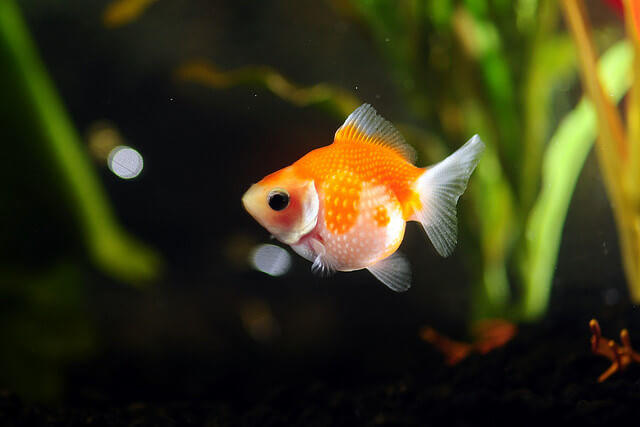Pearlscale goldfish are a captivating variety with their distinctive spherical body shape and characteristic dome-like scales. These goldfish stand out among other breeds, resembling tiny living treasures in your aquarium. In this care guide, we will explore the specific features of pearlscale goldfish and provide essential tips for ensuring their well-being and happiness in your aquatic environment.

Physical Characteristics
The pearlscale goldfish is renowned for its unique appearance. Its spherical body shape, resembling a golf ball, is adorned with domed scales made of calcium carbonate. This distinctive feature is what sets the pearlscale apart from other goldfish breeds. The small, pointed head, although less noticeable, beautifully complements the remarkable body shape. The single dorsal fin starts at the middle of the back and extends to the caudal peduncle, while all other fins are paired with rounded ends. The caudal fins are sturdy and should be divided with mildly forked lobes that sit high, maintaining an elegant posture as the goldfish glides through the water.
Color Variations
Pearlscale goldfish exhibit a wide range of captivating colors and patterns. They come in metallic self-colored varieties, where a single color dominates the entire body. Variegated pearlscales display a stunning combination of multiple colors, creating intricate patterns that add visual interest to your aquarium. Calico pearlscales showcase a vibrant mix of orange, red, black, and white, resulting in a kaleidoscope of colors swimming gracefully through the water. The color variations of pearlscale goldfish offer endless possibilities for creating a visually striking aquatic display.
Care Tips
To ensure the well-being of your pearlscale goldfish, it is crucial to provide them with a suitable environment and proper care. Here are some essential care tips to keep in mind:
Tank Size
Pearlscale goldfish require a spacious tank to accommodate their round body shape and allow them to swim comfortably. As a general rule, provide a minimum of 20 gallons of water per adult pearlscale goldfish.
Water Parameters
Maintain good water quality by regularly monitoring and adjusting water parameters. Pearlscale goldfish thrive in temperatures ranging from 65-72 degrees Fahrenheit (18-22 degrees Celsius) and prefer a pH level between 7.0 and 8.4. Additionally, use a reliable filtration system to keep the water clean and oxygenated.
Diet
Pearlscale goldfish are omnivorous, and their diet should consist of a balanced mix of high-quality goldfish pellets, flakes, and fresh vegetables. Supplement their diet with occasional treats such as bloodworms or brine shrimp. Be mindful of overfeeding, as pearlscales are prone to swim bladder issues and constipation. Feed them small portions multiple times a day to prevent overeating.
Tankmates
Choose tankmates that are compatible with pearlscale goldfish. Opt for peaceful and slow-moving species to avoid competition for food and potential injuries. Good tankmates include other fancy goldfish varieties such as fantails, ranchus, or orandas.
Conclusion
The pearlscale goldfish is a true gem among goldfish breeds, captivating enthusiasts with its unique spherical body shape and distinctive scales. By providing a suitable environment, proper nutrition, and good care, you can ensure the health and happiness of your pearlscale goldfish. With their enchanting presence and vibrant colors, these elegant fish are sure to become the centerpiece of any aquarium, captivating the hearts of all who observe their beauty.
Sources:
- Stoskopf, M. (1993). Goldfish Varieties and Genetics: A Handbook for Breeders. T.F.H. Publications.
- Alderton, D. (2008). Goldfish: A Complete Introduction. Firefly Books.
Reviewed By: Tim Winter

Tim Winter has a strong affection for pets and wildlife. His years of experience caring for various types of pets has led him to share his knowledge with others on the best practices in pet care. Tim holds a Bachelor of Science from the University of Oregon School of Journalism and Communications.
